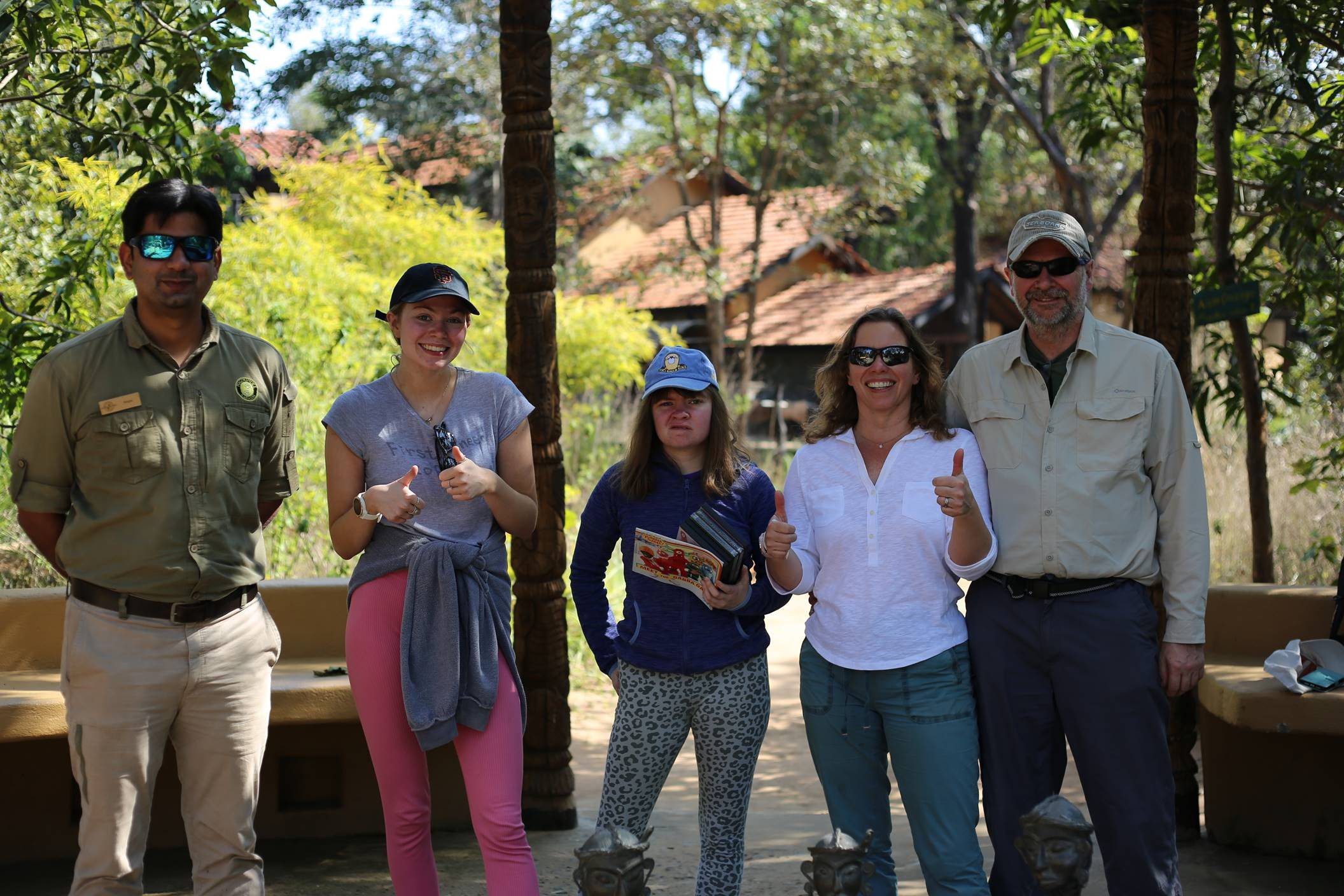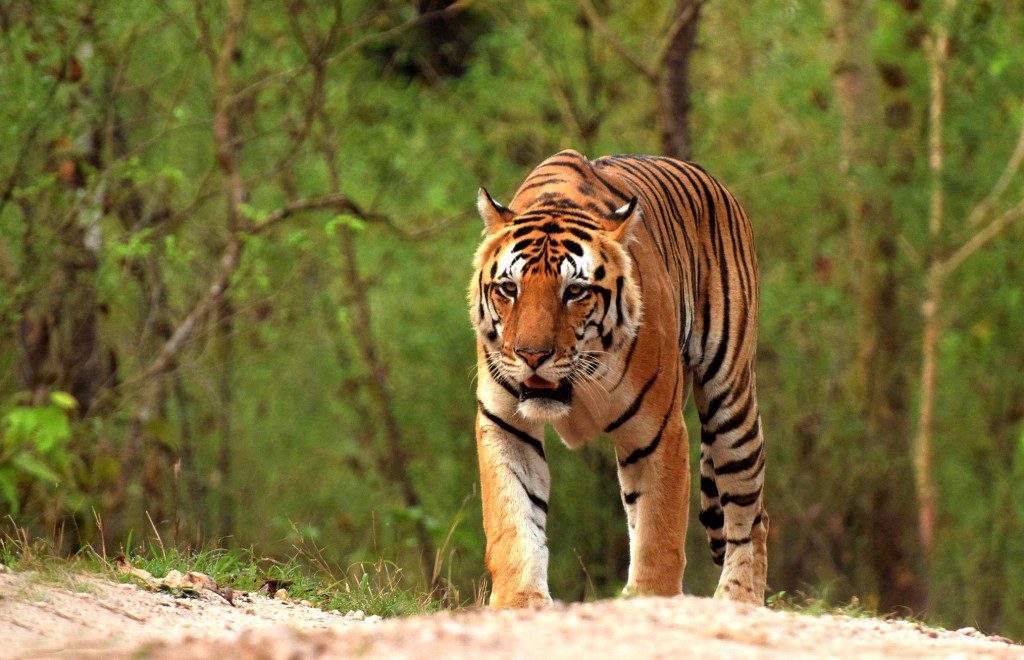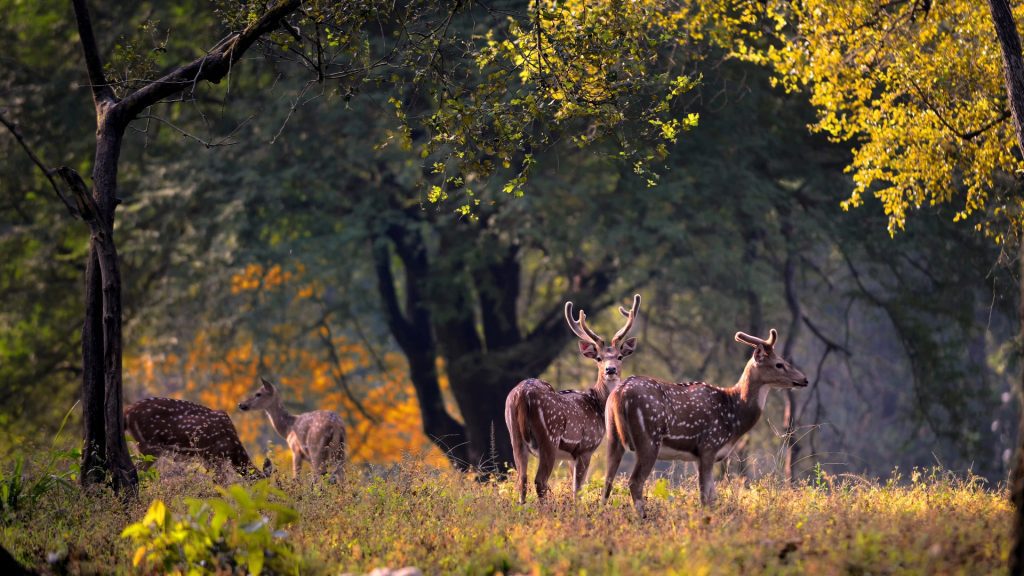The delicate balance of Tribes, Tigers and Tourists at Kahna National Park
“Preserving the habitat of the tiger is as important as preserving the tigers themselves,” Sanjay, a local naturalist tells us on our first evening at Kahna National Park. I sit by a roaring fire, drinking wine and nibbling Indian snacks while listening to his introduction.
Tiger preservation has involved radical change for two indigenous tribes of Central India, whose villages have been relocated out of the forest. This has been done to release vital grazing ground for the Chital, a white-spotted golden deer and main food source for tigers. These clearings, once inhabited with humans and huts, are now filled with waving grass and winter pools of water, where the rare Barasingha deer also wade to cool off and feed on green water plants.
The following morning, as we bounce over the rutted track towards the park entrance for our safari, we pass through a few of the relocated villages with their striking aqua blue houses. Each single-story dwelling sports a deep white stripe around the bottom – to enable snakes and insects to be clearly seen.
Most are fronted by a full-length porch which serves as a cattle shed. Giant bottle gourd squash trail over roofs, looking like something from a Roald Dahl book. These keep the inhabitants cool during the scorching summers. There is a keen accord between humans and animals here. Cows amble along the street, as if years of being sacred has instilled in them the knowledge that they are safe to do as they please. Goats and dogs trot down the road and clusters of children wave, shouting ‘bye’ at us in an excited chorus.
Meeting the gazes of the locals we pass, I’m aware of the fine line we tourists tread between curiosity and imposition. It’s good to hear that the preservation of the tribes is as valued as that of the tigers. Pugdundee Safaris shares with us their initiatives; 70% of staff are locals and the company pays the salary of the village teacher. An artist sets his easel up at the main lodge each day and sells his paintings of tigers and leopards to guests.
One night we are treated to a tribal dinner, an absolute feast which we eat outside under a velvet night sky full of stars, kept warm by the flaming fire pits which surround our table.
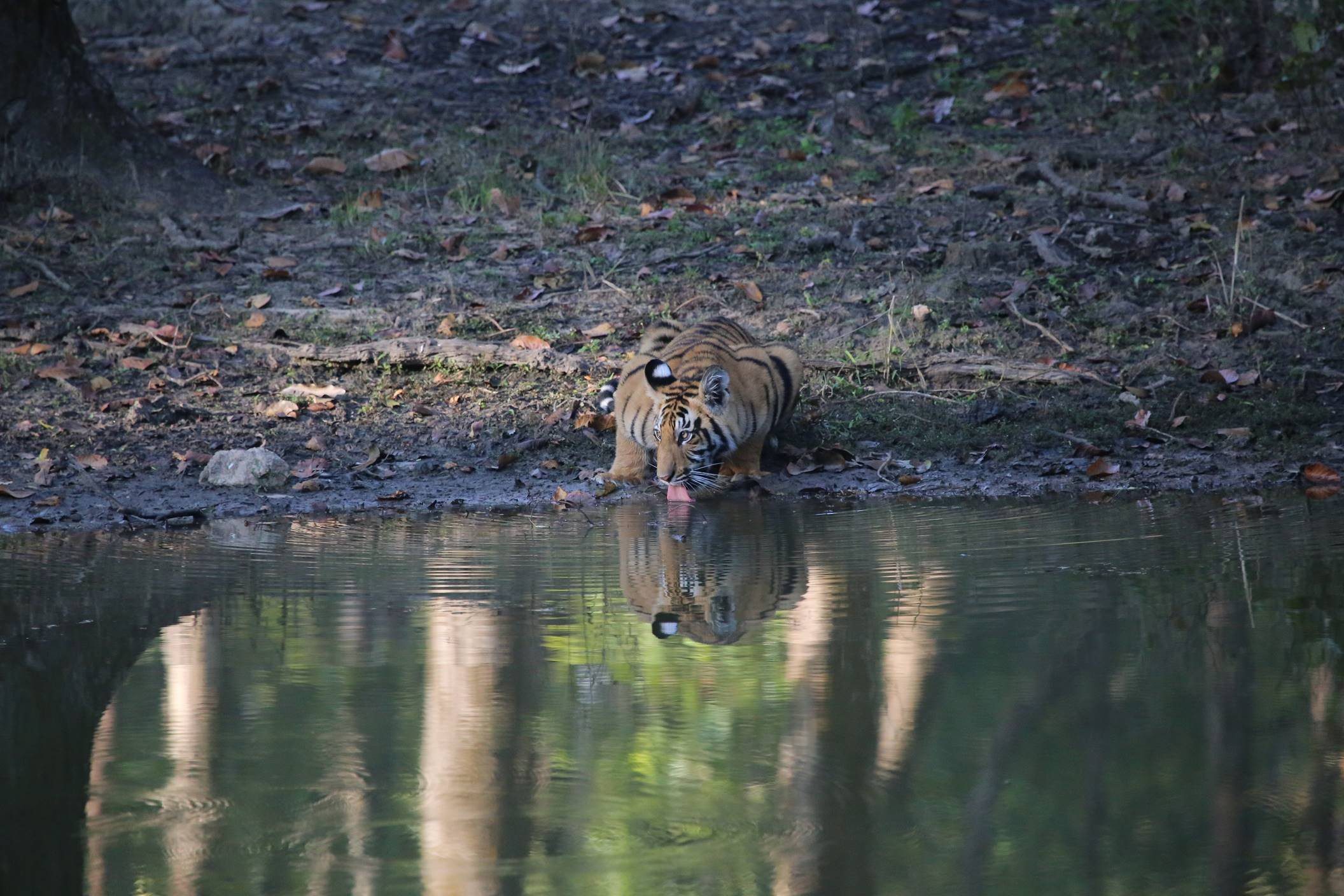
The cultural shift required to protect the tigers, cannot be underestimated. Traditionally, the forest was seen as a hunting ground for locals and Europeans. And Indian king has known to have shot 30 tigers in four years. Neither have the villagers always enjoyed a harmonious relationship with the big cats that live in the forest around them. Old or injured tigers who couldn’t hunt their traditional prey, would come to the village for easy pickings of cow or goat. Because tigers do not eat all their kill in one go, the villagers would poison the carcass, which the tiger would finish later and subsequently die.
In an effort to change attitudes, villagers are now offered compensation for any animals they lose to the tigers. Initially, some villagers tied up their elderly goats in the forest and then claimed their dues when the reluctant sacrifices were inevitably eaten. So, a sliding scale of compensation has been introduced based on the age and value of the original animal and the number of claims has dropped.
Local tribes people are also now employed as guides. As former forest dwellers, they can navigate the 1,945 square km forest and are highly skilled in animal tracking. Each morning as we line up to enter the park, we are allocated a guide based on a strict rota basis. These guides stand in the jeep, eyes scanning the trees and ground for tracks, their ears alert to the sounds around us. Two animals help humans to locate tigers, the Chital (spotted deer) and the Langur monkeys. The Chital alarm call is like the cry of a seagull, but as they alarm on smell, their warnings are not infallible.
The real watchmen of the forest are the Langur monkeys who alarm call on sight of a tiger. Their tiger alarm I can best describe as sounding like a coughing Chihuahua. A forest is never quiet, and it takes my ears a couple of days to even begin to separate out these calls.
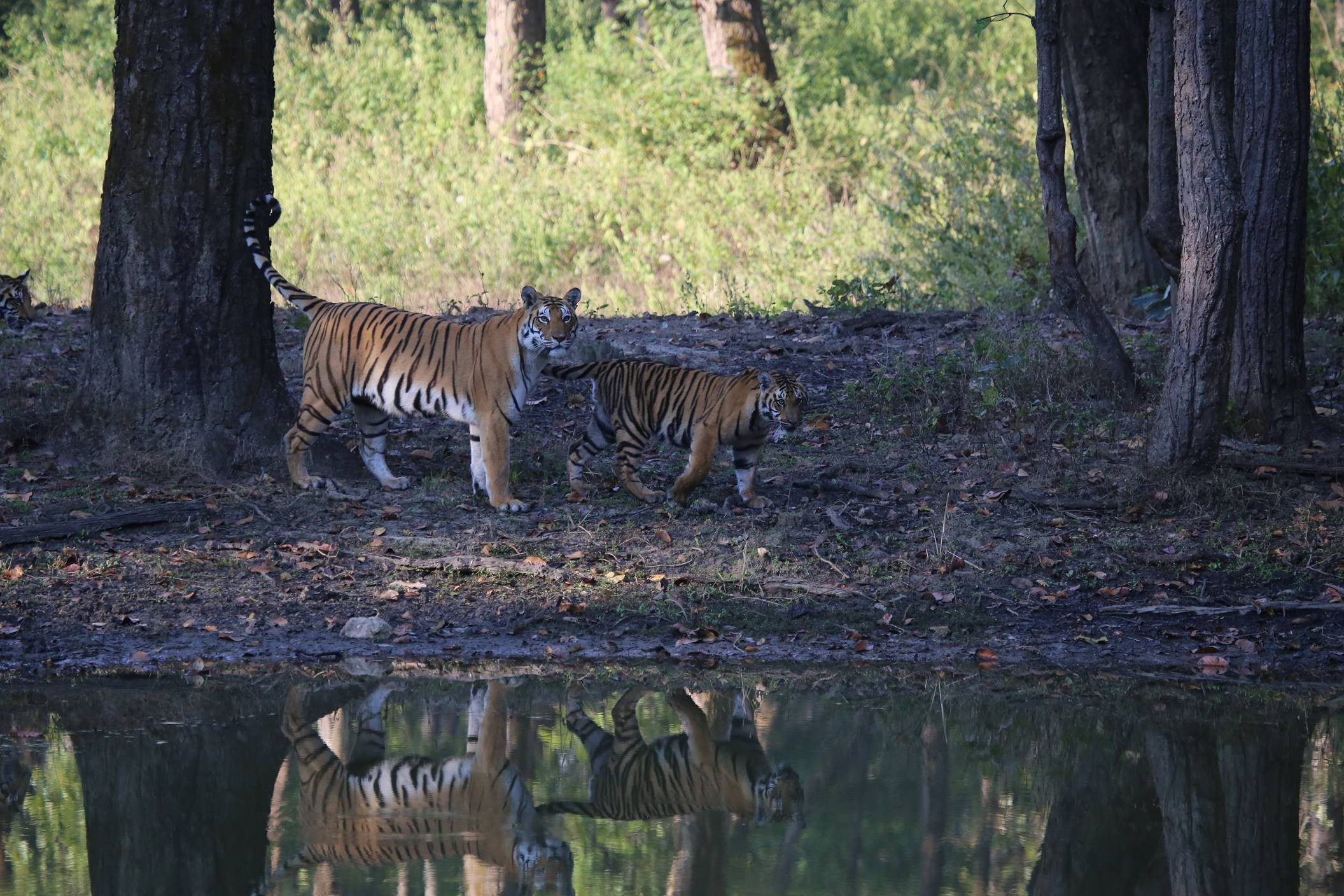
On my final night cozied up by the fire, we are shown a documentary about the tigress Lakshmi, and her struggles to bring up her three cubs in Kahna. Named after an Indian goddess, she is a brave and selfless mother. Near-fatally wounded by an incoming male tiger, the fate of her cubs hangs in the balance. “Would the forest Guides ever step in and heal a wounded tiger?” I ask. The answer is, “No, never.” It is survival of the fittest. If a tiger is injured and its cubs killed then the cubs of the stronger male will be left to survive. Difficult to hear and harder to watch. I am thankful to discover that Lakshmi and her cubs made a reappearance 10 months after the filming ended.
The goddess Lakshmi has the power to transform dreams into reality and to me, Kahna reflects the naturalist’s dream. From being hunted to being painted, the tigers’ significance for the tribes has altered radically in a very short space of time. A visit to Kahna National Park is a lesson in how cultures can change, and the benefits to all of us that result from this shift.
Written by: Abby Fermont, from UK, a guest visiting us at Kanha Earth Lodge.

